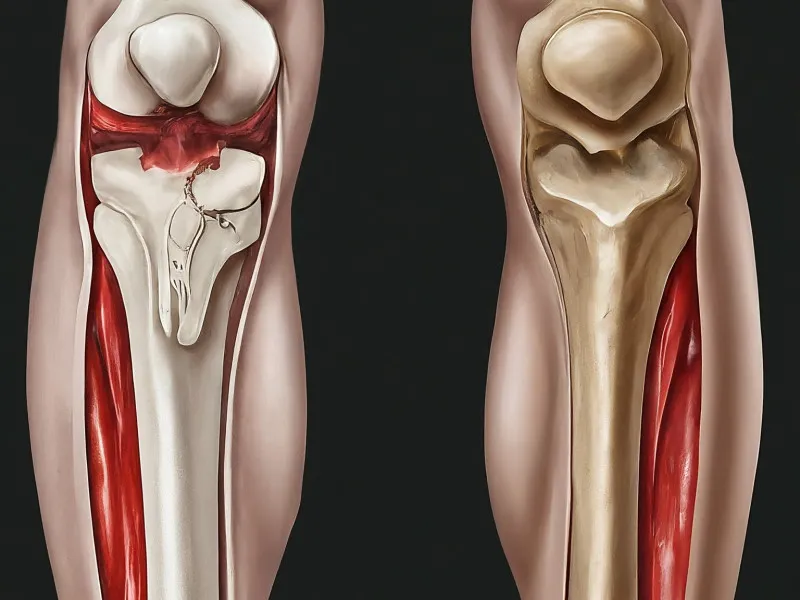
Microfracture surgery, a technique used to repair damaged articular cartilage in the knee, has been a common approach in orthopaedic surgery, particularly among athletes. While it shows promising short-term results, its long-term success rate is questioned. This article aims to explore why microfracture surgery often fails and to discuss potential alternatives for cartilage repair.
Understanding Microfracture Surgery
Microfracture involves creating small holes in the joint surface to stimulate a healing response. Initially, this technique showed promising results in athletes with joint injuries. However, the results often deteriorate over time. The underlying issue is that the body struggles to balance between durable healing and repeated injury from weight-bearing activities, leading to the breakdown of repair tissue over a few years.
The Challenge with Articular Cartilage Repair
The articular cartilage covering joint surfaces is smooth and essential for joint movement. When injured, the smooth surface becomes rough, leading to pain and mobility issues. Unfortunately, the cartilage’s capacity to heal is limited. The repair tissue formed is usually not the same as normal cartilage, leading to pain recurrence. Over time, the absence of adequate healing exacerbates the initial damage, resulting in post-traumatic arthritis and deformation of the underlying bone.
Long-Term Outcomes and Failure Rates
Microfracture’s long-term outcomes are variable. A study revealed that while scores like IKDC, Lysholm, and Tegner increased significantly at 2 years post-treatment, they gradually deteriorated in the long term. Additionally, the risk of osteoarthritis progression was higher in older patients with larger or multiple lesions. Another concern is the formation of cysts in the bone due to unhealed bone cavities, causing pain and bone deformity.
Alternatives to Microfracture Surgery
Given the limitations of microfracture, alternatives like autologous chondrocyte implantation (ACI), mosaicplasty, and the use of Mesenchymal stromal cells are being explored. ACI, MACI, STACI, where a patient’s cartilage cells are grown and implanted, has shown effectiveness but comes with a high reoperation rate. Mosaicplasty, transferring bone and cartilage to damaged areas, shows good outcomes with both open and arthroscopic techniques. Mesenchymal stromal cells, preferred for their therapeutic effects on cartilage and subchondral bone, are also being considered for enhancing the repair of articular cartilage defects.
Why Does Microfracture Surgery Often Fail?
- Understanding Microfracture Surgery – Microfracture is a surgical technique used for cartilage repair. While initially promising, long-term results are often disappointing. For a deeper understanding, read “Rethinking Microfracture Surgery in Modern Orthopaedics.”
- Long-Term Outcomes and Failure Rates – Studies reveal a gradual deterioration in outcomes post microfracture treatment. For more insights, explore “Unveiling the Truth About Microfracture Surgery.”
- Alternatives to Microfracture Surgery – Considering these limitations, alternatives like ACI and mosaicplasty are explored. The medicolegal implications of such treatments also warrant consideration.
Conclusion While microfracture surgery has been a staple in treating cartilage defects, its long-term efficacy is questionable due to the complex nature of cartilage repair and the high mechanical demands of the knee joint. Alternatives like ACI, mosaicplasty, and cell-based therapies offer promising avenues for more effective and lasting cartilage repair. As the field of orthopaedic surgery evolves, these newer techniques might provide better solutions for patients suffering from cartilage injuries.
FAQs on Microfracture Surgery and Alternatives
What is Microfracture Surgery?
Microfracture surgery is a technique used for repairing damaged cartilage in the knee. Learn more about its efficacy and outcomes in ” Microfracture in Cartilage Repair: Efficacy, Adverse Outcomes, and Clinical Controversies.”
Why Does Microfracture Surgery Often Fail?
Long-term outcomes of microfracture surgery are variable and can lead to failure. For detailed insights, read ” Unveiling the Truth About Microfracture Surgery: Your Questions Answered.”
What are the Alternatives to Microfracture Surgery?
Alternatives include ACI and mosaicplasty. For an in-depth understanding, visit ” Rethinking Microfracture Surgery in Modern Orthopaedics: Perspectives for Cartilage Repair.”
What are the Medicolegal Implications of Microfracture Surgery?
The medicolegal aspects are crucial for both patients and surgeons. For more information, see “Medicolegal Implications of Microfracture Surgery in Cartilage Repair: An In-Depth Q&A.”
How Effective is Autologous Chondrocyte Implantation (ACI) Compared to Microfracture?
ACI has shown promising results but comes with its own set of challenges. Further details can be found in the article linked above.
Is Mosaicplasty a Better Option Than Microfracture?
Mosaicplasty shows good outcomes, particularly in younger patients with smaller lesions. For more detailed information, refer to the articles linked above.
What are the Long-Term Outcomes of Microfracture Surgery?
While short-term results can be positive, long-term outcomes often show deterioration. Read the specific articles for comprehensive insights.
Can Stem Cell Therapy Be an Alternative to Microfracture?
Stem cell therapy is an emerging alternative, offering new possibilities in cartilage repair. Explore more in the related articles.
